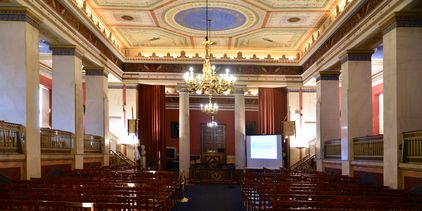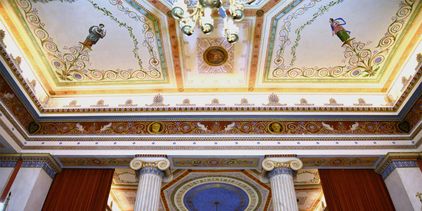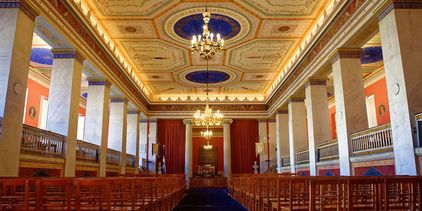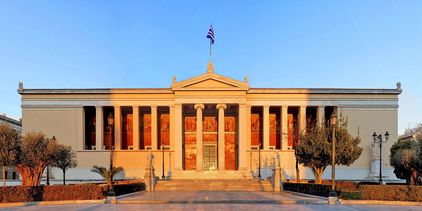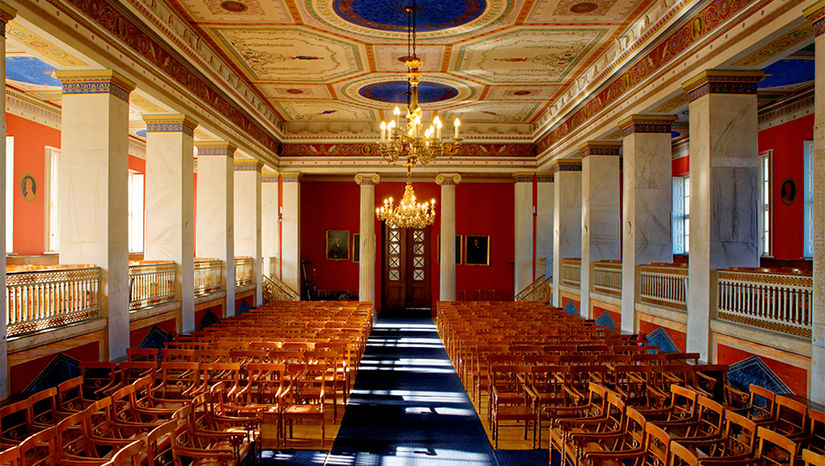
If you haven’t yet visited this historical building, it is now time to do it. The National and Kapodistrian University of Athens invites you to discover its longstanding history and the works of art that are harbored in its premises.
Over the years, this emblematic building has served multiple functions: a locus of memory, parexcellence, of the capital of the Hellenic State; a building to house the country’s primary university; a preferred meeting point, which served as a springboard for political movements and other social mobilizations.
The historical building of the University of Athens has always been at the heart of major events, which ranged from commemorations and important ceremonies, to erecting statues and columns, to important gatherings, and much more.
Libraries, museums, laboratories, meeting halls of the Hellenic Parliament, as well as some of the University’s administration services have been housed at its premises over the years. The jewel of the building is Great Hall where major academic events take place. This is where students receive their degree during a ceremony that consecrates their academic efforts. This is where the National and Kapodistrian University of Athens recognizes the work and achievements of distinguished men and women of science, the letters and the arts, by bestowing upon them the title of Doctor Honoris Causa of the National and Kapodistrian University of Athens. Lest we forget the building’s two amphitheaters, where conferences and other events are hosted regularly.
This year, there is a triple celebration for our institution. It is the 180th anniversary of the construction of the Athens University’s magnificent neoclassical building, erected on the architectural plans of Christian Hansen (1803-1883), a renowned Danish architect. It is also the commemoration of 160 years since construction on the Propylaea’s frieze started. This symbolic piece of the art, which captures the continuity of Greek history all the way through the Monarchy of Otto, King of Greece, was sponsored by the Greek Baron Simon Sinas (1810-1876), and was based on the drawings made by Carl Rahl, a famous painter and engraver from Vienna. Finally, we celebrate 130 years since the completion of the said frieze, which was made possible thanks to the Polish painter Eduard Lebiedzky (1862-1915). A series of emblematic sculptures complete this panorama of architectural treasures and exquisite paintings. Walk around the peristyle, the front yard, the alcoves, and the atrium of the building to meet Rigas Feraios, one of the heroes of the Greek Revolution; Gregory V of Constantinople, the Patriarch who became a martyr in the hands of the Ottoman Turks; Adamantios Korais, the nation’s greater teacher and scholar; William Gladstone, a British politician and an fervent admirer of Greece; Ioannis Kapodistrias, Greece’s first governor. Make sure to stop and ponder before the sculptures that pay tribute to the sacrifice of Greek students who died for freedom and independence during the 1897 war and World War I. All these sculptures were created by Ioannis Kossos (1822-1873), Georgios Fytalis (1830-1880), Georgios Vitalis (1838-1901), Georgios Vroutos (1843-1909), Georgios Bonanos (1863-1940) and Georgios Papagiannis (1860-1920).
If you didn’t know any of this and want to discover the hidden treasures of the University’s historical building, this is your chance. Whatever your age, book one of our scheduled guided tours, which are animated by the passionate MA students and Ph.D. candidates of the Department of History and Archaeology of the National and Kapodistrian University of Athens. Working under the guidance and supervision of Dimitris Pavlopoulos, Associate Professor of History of Art, your dedicated guides will lift the veil of mystery that surrounds of one Athens’ iconic hallmarks.
To book your guided tour, visit our free open platform online and register by using your first and last name.
